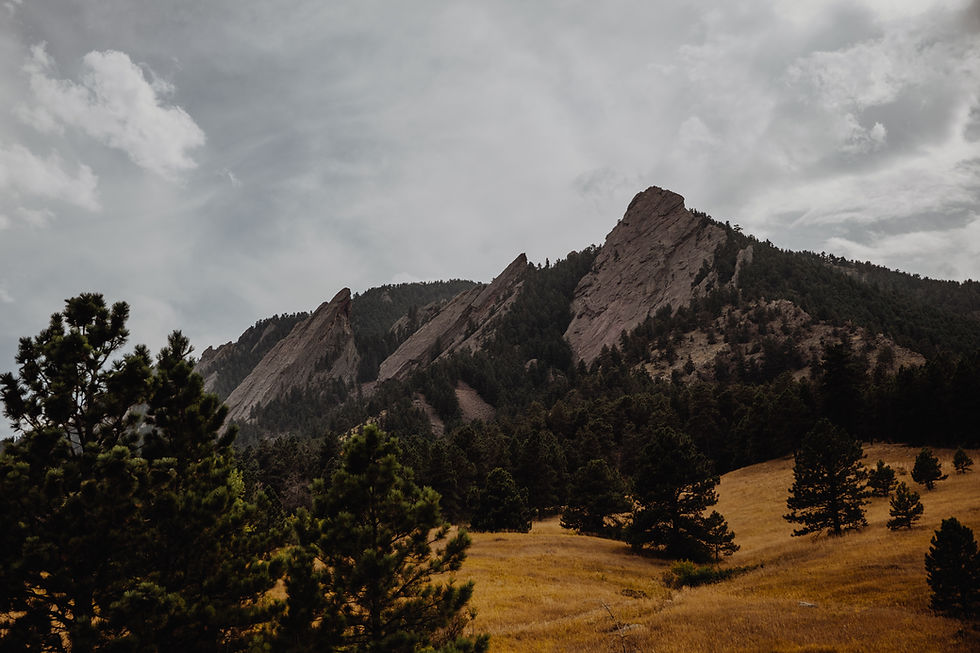Flatirons Golf Course, CO
- David Santos
- Jan 9
- 4 min read
Updated: Jan 20

“When you’ve got apex predators like hawks around, and all this wildlife coming through, it shows that the ecosystem is working,”
Jake Jacobs
Golf Course Superintendent
Flatirons Golf Course/City of Boulder
Boulder, Colorado
Municipal Course
Unexpected Moments of Wonder
Nestled at the base of Boulder’s iconic mountain backdrop, the city-owned golf course under Jake Jacobs’s stewardship is anything but ordinary. It’s more than a place for golfers—it’s a thriving sanctuary for wildlife and a testament to the potential of sustainable land management. For Jacobs, who has worked at the course since he was 16, maintaining this balance between recreation and nature has been a career-long passion.
“We’ve had red-tailed hawks nesting here for years,” Jacobs says with pride. “We’ve got owls—baby owls, even—deer coming through, bobcats, mountain lions. And once a year, a bear comes through. Though,” he adds with a chuckle, “it’s not the best timing when there’s a junior golf camp going on!”
The Mink’s Playground
One of Jacobs’s favorite stories is about the mink that now call the course home. “Back in 2013, we had a massive flood—13 inches of rain in 48 hours. The Wellman Canal behind the course rose eight feet, and we think the mink relocated here because of that,” he explains. These playful creatures have made a home in the irrigation ditches and pumping ponds. “They’ve basically turned it into their own water park. They’ll shoot through a pipe that dumps into the pond and then go back to do it all over again. If you’re out there on the right day, you’ll see them playing right in front of you.”

For Jacobs, the presence of these animals is more than a charming addition to the landscape. It’s a sign of a thriving ecosystem. “When you’ve got apex predators like hawks around, and all this wildlife coming through, it shows that the ecosystem is working,” he says.
Challenges of Maintaining Ecological Harmony
Maintaining this harmony doesn’t come without challenges, especially under the City of Boulder’s strict ecological guidelines. “We can’t spray herbicides here, so cultural practices are our biggest tool,” Jacobs explains. These include consistent mowing, top dressing, aeration, and fertilization. “We do have weeds—dandelions, clover, plantain—but good maintenance keeps them in check.”
Jacobs emphasizes that consistency is the key to success. “If you quit doing something for a month or miss a window, that’s when things can start to come back. Top dressing, mowing, and aeration are key to keeping the turf healthy and the weeds under control.”
The winter months add another layer of complexity. Snow mold can pose a serious threat to the greens, so Jacobs’s team applies protective treatments while staying within ecological boundaries. “We’re allowed to use fungicides, but only on a curative basis,” Jacobs explains. “A lot of courses spray before problems show up. We have to wait until something like dollar spot appears and then cure it, sometimes with nitrogen before anything else.”
In addition to these practices, Jacobs is exploring new ways to enhance soil health. As a participant in the Citizen Soil Science Health Project, he’s looking into setting up an on-site composting facility. “It’s something I’m hoping to implement next year,” he says, inspired by creative solutions like a friend’s composting program in Estes Park, where elk droppings are processed and repurposed for turf management. “They’ve even got a grinder to process it all. I told him to send some of that down to me!”
Rethinking the Role of Golf Courses
Despite the challenges, Jacobs is passionate about changing how people perceive golf courses and their impact on nature. “People need to look beyond the golf and see what’s really happening out here,” he says.
The course plays a vital role in water management. “We test the water that comes into the course and the water that leaves. It’s cleaner when it leaves because it’s been naturally filtered through the turf,” Jacobs explains. This natural filtration, along with the habitat created by the course’s trees, ponds, and open spaces, makes it a sustainable space for wildlife and the environment. Jacobs believes certifications like Audubon recertification help highlight these benefits. “We meet rigorous environmental standards, and that’s something we’re proud of,” he says.
A Philosophy of Innovation and Consistency
After 26 years at the course, Jake Jacobs has developed a straightforward but powerful approach: stay consistent and remain open to new ideas. “I started here at 16 and worked my way up. I’ve seen what works and what doesn’t,” he says. “You can’t just keep doing things the way they’ve always been done. You have to try new techniques, stay informed, and adapt.”
Jacobs emphasizes that golf courses are more than just places to play—they contribute to the environment in meaningful ways. “People need to look at a golf course more like the Audubon things,” he explains. “We’ve got the trees, the animals, the water. We test the water when it comes into the course and when it leaves, and it’s cleaner when it leaves because of how it’s filtered. There are a lot of benefits for nature.” For Jacobs, maintaining the course is about staying consistent with practices that support both the turf and the surrounding ecosystem. By combining routine maintenance with innovative solutions, Jacobs shows how golf courses can sustain the game while benefiting the environment.
By Andi Hayes and David Santos
Comments